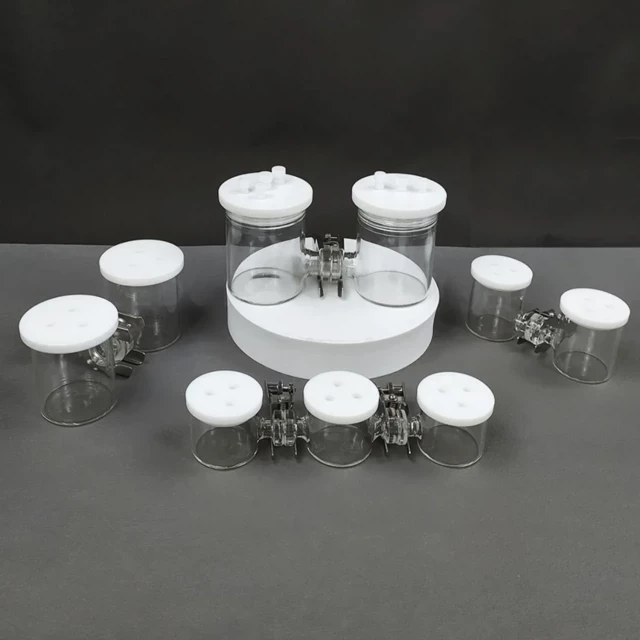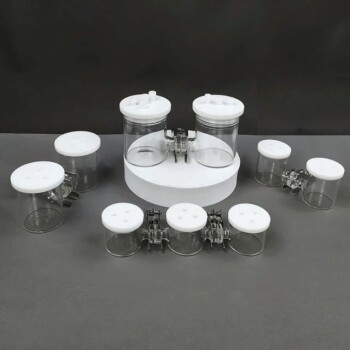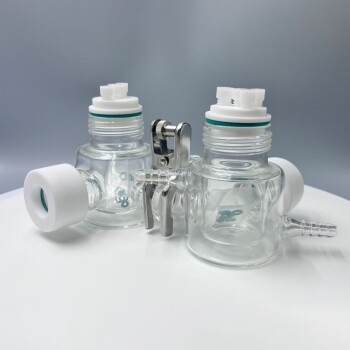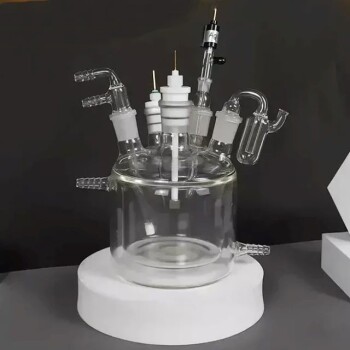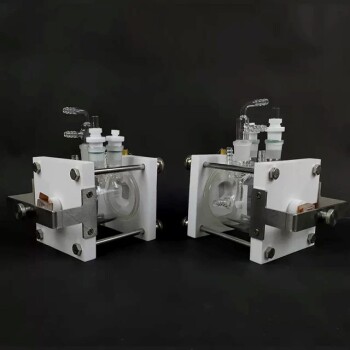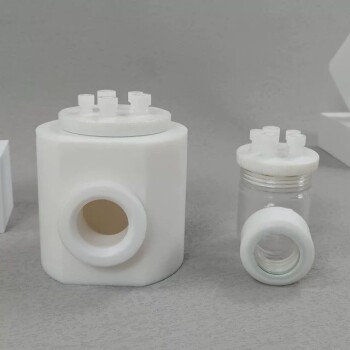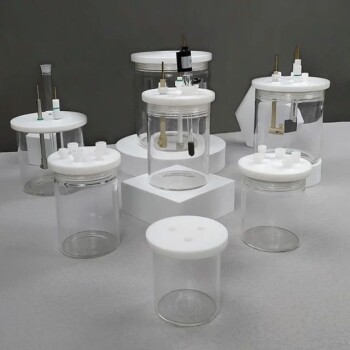Introduction: H-Type Electrolytic Cell
The H-type electrolytic cell is a type of electrochemical cell that relies on an electrolyte to carry an electrical current. It consists of two electrodes, an anode, and a cathode, which are separated by an electrolyte. The H-type electrolytic cell is commonly used in industrial processes for the production of various chemicals, such as chlorine, hydrogen, and sodium hydroxide. Its unique design allows for efficient production and separation of these chemicals. Understanding the components and operation of the H-type electrolytic cell is crucial in producing high-quality chemicals and overcoming the challenges that come with its operation.
Table of Contents
Components of an Electrolytic Cell
An electrolytic cell is an electrochemical cell that uses electrical energy to drive a non-spontaneous redox reaction. It consists of three essential components - the anode, cathode, and electrolyte.

The Anode
The anode is the negative or reducing electrode that releases electrons to the external circuit and oxidizes during an electrochemical reaction. The anode should exhibit efficient reducing agent properties, high coulombic output, good conductivity, stability, ease of fabrication, and low cost. Metals such as zinc and lithium are often used as anode materials.
The Cathode
The cathode is the positive or oxidizing electrode that acquires electrons from the external circuit and is reduced during an electrochemical reaction. It should exhibit efficient oxidizing agent properties, stability when in contact with electrolyte, useful working voltage, ease of fabrication, and low cost. Metallic oxides such as are often used as cathode materials.
The Electrolyte
The electrolyte is the medium that provides the ion transport mechanism between the cathode and anode of a cell. Electrolytes are often liquids, such as water or other solvents, with dissolved salts, acids, or alkalis that are required for ionic conduction. Electrolytes should exhibit strong ionic conductivity, no electric conductivity, non-reactivity with electrode materials, properties resistance to temperature fluctuations, safeness in handling, and low cost. Aqueous solutions such as dissolved salts, acids, and alkalis are often used as electrolytes.
The electrolytic cell requires an external voltage to decompose a normally stable or inert chemical compound in the solution. Electrical energy is provided, producing a chemical reaction which would not occur spontaneously otherwise.
In addition to the three essential components, an electrolytic cell may also include other components, such as a power source, voltage regulator, and measuring instrument. The power source provides the electrical energy required for the cell to function, while the voltage regulator ensures that the correct voltage is maintained. The measuring instrument, such as a pH meter or conductivity meter, is used to monitor the performance of the cell.
In conclusion, the anode, cathode, and electrolyte are the three essential components of an electrolytic cell. The anode is the negative or reducing electrode, while the cathode is the positive or oxidizing electrode. The electrolyte is the medium that provides the ion transport mechanism between the cathode and anode of a cell. It is important to consider the desirable properties of the anode, cathode, and electrolyte materials, such as good conductivity, stability, ease of fabrication, and low cost. Other components, such as a power source, voltage regulator, and measuring instrument, may also be included in the electrolytic cell to ensure optimal performance.
Primary Cell vs. Electrolytic Cell
In the field of laboratory equipment, H-Type electrolytic cells are commonly used for chemical reactions that require the separation of compounds. However, operating these cells comes with its own set of challenges, particularly when it comes to distinguishing between primary and electrolytic cells.

What is a Primary Cell?
A primary cell is a battery that produces electricity through a chemical reaction. They are designed to convert chemical energy into electrical energy and are commonly used in everyday electronic devices such as watches, remotes, and toys. Primary cells are also used in laboratory settings, but they should not be used in place of electrolytic cells.
What is an Electrolytic Cell?
An electrolytic cell is used to facilitate a chemical reaction through the application of an electric current. It is an electrochemical device that uses electrical energy to facilitate a non-spontaneous redox reaction. Electrolytic cells are commonly used to decompose chemical compounds, in a process called electrolysis, and for the extraction of metals.
Key Differences between Primary Cells and Electrolytic Cells
The key difference between primary cells and electrolytic cells is their function. Primary cells are designed to produce electricity, while electrolytic cells are used to facilitate non-spontaneous chemical reactions. Primary cells generate electrical energy from chemical reactions, whereas electrolytic cells generate chemical reactions from an input of electrical energy.
Consequences of Using Primary Cells in H-Type Electrolytic Cells
It is essential to ensure that the correct type of cell is being used when operating an H-Type electrolytic cell. Using a primary cell in place of an electrolytic cell can lead to disastrous consequences. The use of a primary cell in an H-Type electrolytic cell can lead to the generation of gas, which can cause the cell to rupture. It is important to carefully read the manufacturer's instructions and to have a thorough understanding of the principles of H-Type electrolytic cell operation to avoid such consequences.
In conclusion, H-Type electrolytic cells are essential for laboratory professionals to carry out complex chemical reactions with confidence and precision. However, it is crucial to distinguish between primary and electrolytic cells to ensure safe and effective use of these cells. By understanding the key differences between these two types of cells, laboratory professionals can select the appropriate cell for their experiments and avoid any potential hazards.
Applications of Electrolytic Cells
Electrolytic cells have a wide range of applications in various fields due to their ability to produce chemical reactions and generate electrical energy.
Extraction of Metals
Electrolytic cells are commonly used to extract metals from their ores. This process involves the use of strong acids to obtain a salt, which is then electrolyzed to liberate the metal. For instance, zinc ore is treated with sulphuric acid to obtain zinc sulphate solution, which is then electrolyzed in an electrolytic tank. The current density is kept at 1000 A/m2 and zinc is deposited on the cathode.
Refining of Metals
Electrolytic cells are also used to refine metals. The main advantage of extracting a metal by electrolytic processes is that the purity of the product obtained is 98 to 99%. The anode is made of the extracted metal, and pure metal is deposited at the cathode. The electrolyte is made of the metal solution. For example, copper refining by electrolytic process consumes about 150 to 300 kWH/tonne of refined copper.
Production of Chemicals
Electrolytic cells are used in the production of many chemicals such as caustic soda (NaOH) and chlorine gas, which are manufactured on a large scale. Potassium permanganate, hydrogen, and oxygen are also produced by electrolysis on a large scale.
Electroplating
Electroplating is the process of covering the articles made up of cheap metals by a thin covering of precious metal such as iron with nickel, chromium, silver, or gold with one or more of the following aim of view:
- Protection of metals against corrosion.
- Giving a shiny appearance to articles.
- Giving reflecting properties to reflectors.
- Replacing work-out material.
Electro-Typing
Electro-typing is a process by which type, woodcuts, etc., are reproduced in copper by a process of electroplating. In this process, a mold is first made of the type in wax, then coated with black lead to give it a metallic surface, and then subjected to the process of electro-deposition. Thus, a film of copper is formed on the prepared surface.
Electroforming
Electroforming is the process of creating a metal part by electrodeposition onto a model called a mandrel. It is used to produce parts with complex shapes and fine details that are too difficult to produce by other methods.
Electro-Cleaning
Electro-cleaning is a process that is used to clean metal parts by electrolysis. In this process, the metal parts are immersed in an electrolyte solution and a direct current is passed through the solution to remove any dirt or other contaminants on the surface of the parts.
In conclusion, electrolytic cells have a wide range of applications in various fields, including the extraction and refining of metals, the production of chemicals, electroplating, electro-typing, electroforming, and electro-cleaning. These applications demonstrate the versatility and usefulness of electrolytic cells in modern industry.
H-Type Electrolytic Cell Operation and Challenges
Electrolytic cells are electrochemical cells that use an external source of electrical energy to force a non-spontaneous chemical reaction. In such cells, a voltage is applied between the two electrodes (anode and cathode) immersed in an electrolyte solution, causing ions in the electrolyte to migrate towards an electrode with the opposite charge. The electrode reactions that take place involve the transfer of electrons between the electrode and the electrolyte. The direction of electron flow in electrolytic cells is opposite to that in galvanic cells.
Operating an H-Type Electrolytic Cell
H-Type Electrolytic cells are often used in laboratory experiments to generate hydrogen and oxygen gases from water. These cells consist of two electrodes (anode and cathode) separated by a diaphragm or membrane to prevent the formation of bubbles. The electrolyte used is typically water, and the temperature of the electrolyte should be kept constant. A voltage is applied between the electrodes, causing water molecules to dissociate into hydrogen and oxygen gases.
Challenges of H-Type Electrolytic Cell Operation
The operation of H-Type Electrolytic cells can present some challenges that can affect the quality of the results obtained. One of the primary challenges is the formation of bubbles on the electrodes, which can interfere with the chemical reactions and reduce the efficiency of the process. To prevent this, a diaphragm or membrane can be used to separate the electrodes and ensure that bubbles do not form.
Another challenge is the accumulation of impurities in the electrolyte, which can affect the quality of the results obtained. To overcome this, it is essential to ensure the purity of the water used and to regularly clean and change the electrolyte.
The temperature of the electrolyte can also affect the operation of H-Type Electrolytic cells. Keeping the temperature constant can help to improve the efficiency of the process. It is also important to monitor the voltage applied to the cell, as excessive voltage can lead to the production of unwanted byproducts.
Conclusion
In conclusion, while there are challenges associated with H-Type Electrolytic cell operation, these can be overcome through the use of appropriate equipment, maintenance, and control of the operating conditions. By understanding the principles of electrolytic cell operation and the challenges associated with using them, researchers can perform experiments with greater accuracy and efficiency.
Overcoming Challenges with H-Type Electrolytic Cell
H-Type electrolytic cells are widely used in various industries for the production of hydrogen gas, which is an important fuel source. However, the operation of these cells can be challenging due to a number of factors. Here are some ways to overcome these challenges:
Maintaining a Stable Current Density
One of the main challenges in H-Type electrolytic cell operation is maintaining a stable current density across the electrodes. This can be achieved by optimizing the cell design and operating conditions such as temperature and pressure.
Preventing Impurity Buildup
Another challenge is the accumulation of impurities in the electrolyte, which can lead to a decrease in performance and efficiency. To overcome this, regular maintenance and cleaning of the cell is necessary. Additionally, the use of high-quality materials and advanced monitoring systems can help prevent impurity buildup and improve the overall performance of the cell.
Reducing Energy Consumption
Another challenge is the high energy consumption required for the operation of the cell, which can make the process economically unfeasible. To address this, researchers are exploring alternative methods such as the use of renewable energy sources and new materials for the electrodes.
Advancing Sustainable Energy Solutions
Overcoming these challenges is crucial for the widespread adoption of H-Type electrolytic cells and the advancement of sustainable energy solutions. H-Type electrolytic cells have the potential to be a key player in the future of renewable energy, and with continued research and development, these challenges can be overcome.
In conclusion, H-Type electrolytic cells have many advantages but also pose several challenges. However, with the right approach and solutions, these challenges can be overcome, leading to the widespread adoption of sustainable energy solutions.
Related Products
- H Type Electrolytic Cell Triple Electrochemical Cell
- H-Type Double-Layer Optical Electrolytic Electrochemical Cell with Water Bath
- Double Layer Five-Port Water Bath Electrolytic Electrochemical Cell
- Thin-Layer Spectral Electrolysis Electrochemical Cell
- Multifunctional Electrolytic Electrochemical Cell Water Bath Single Layer Double Layer
Related Articles
- The Silent Variable: Engineering Reliability in Electrolytic Cells
- Applications of H-Type Electrolytic Cell in Metal Extraction
- Understanding Electrolytic Cells: Conversion of Energy and Applications
- Applications of Electrolytic Cells in Purification and Electroplating
- The Art of the Non-Spontaneous: Precision in Electrolytic Circuits
